Different Types of Film Cameras You Should Know
![]()
Even though we are firmly ensconced in the digital age when it comes to photography, analog photography has picked up steam in popularity and doesn’t seem to be slowing down.
In this article, we will take a look at the main types of film cameras used by film photographers and explore the main strengths of each one.
Table of Contents
Why Shoot Film?
Film photography has a very hands-on, hand-made approach; especially when it comes to black-and-white film. The process of taking a photograph slows down when shooting film and then there is the processing of the film and printing the image in a darkroom. It’s a much more personal touch than the cold process of digital imaging.
Other technical reasons entice many photographers to go back to film.
You have probably heard the saying “film is more forgiving”. This is very true with black-and-white films. Many black-and-white films can still produce a successful image with up to six stops over or underexposure.
Color film’s dynamic range is two stops over or under. Film grain is much more pleasing with real film as opposed to artificial film grain that can be added in photo editing.
Some photographers prefer the way film captures details and color contrasts. This is so much so when using black and white film.
Now without further ado, let’s step through the most common types of cameras you’ll see in the world of film photography.
Single-Lens Reflex (SLR) Cameras
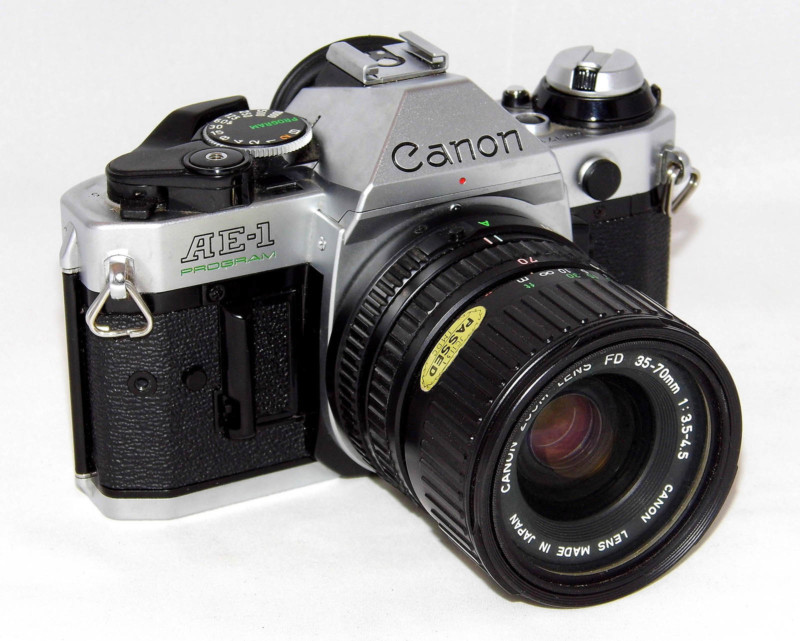
The 35mm camera SLR is the best place to start. It’ll be these types of cameras you might find in your parent’s or grandparent’s attic or basement. SLR stands for “single-lens reflex”. It has an internal mirror that allows you to look through the lens that will be taking the picture and you’ll get a pretty good indication of what your final image is going to look like. Lenses are readily available for SLR cameras and you can change them quickly giving you greater control of your final photograph.
The SLR camera is the most popular and abundantly available camera that takes 35mm film. With an SLR you have full control over your image as you can adjust shutter speed, aperture, and ISO. The cameras give you the option of purchasing using lenses that you can switch out depending on the subject matter you’re photographing.
You will also have a wide range of films, from color to black and white, to choose from.
SLR cameras aren’t limited to shooting 35mm film. Another popular film format for SLR cameras is medium format film.
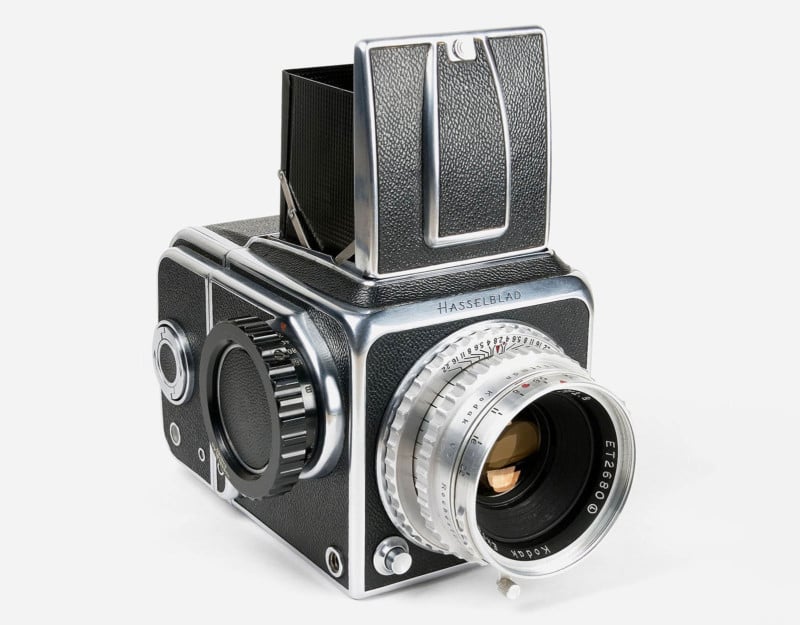
The greatest advantage of a medium-format film camera is the size of the negative it produces. Depending on the camera, the negative for 120 film could be 6×6, 6×7, 6×4.5, and 6×9 centimeters which provides you with a much larger negative than 35mm film. The advantage of that size of film is that you can make a much larger print than you could on 35mm film and not see as much grain in the final print. I guess in digital terms, this would be a higher resolution than a 35mm camera.
You will also get better exposure latitude with medium-format film and cameras. Exposure latitude is the range in which film can be over or under-exposed and still get an acceptable result.
Rangefinders Cameras
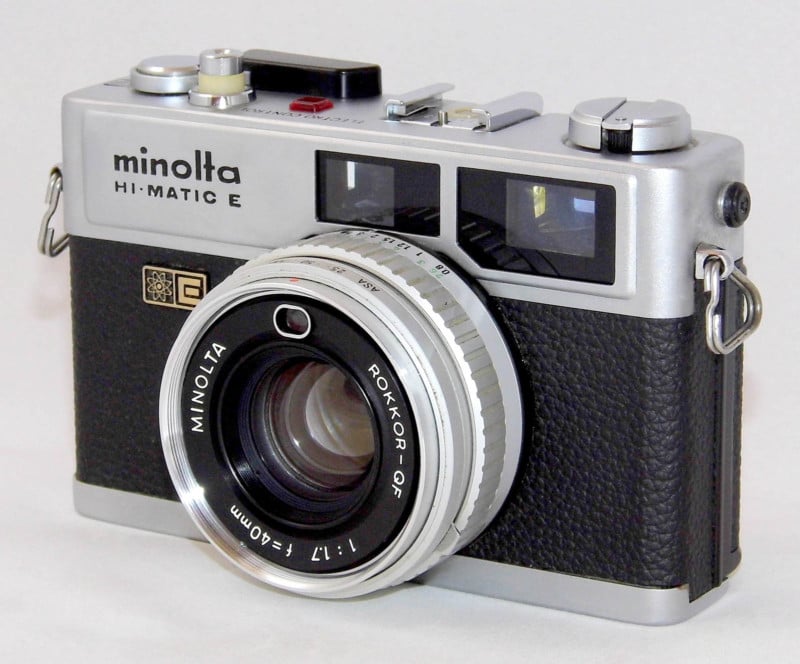
The cousin of the SLR camera is the rangefinder camera. These cameras use a separate window (called a rangefinder; hence its name) to view and focus on the subject so you are not looking directly through the picture-taking lens on these cameras. That viewing window is also called a split image rangefinder and uses triangulation to accurately focus. To focus the image, you move the focusing mechanism until you see the split image, or dual images, merge into one.
Since you are not looking through the same lens as the one that is taking the picture, the image you see may not be exactly what the lens will capture. The advantage of not having the mirror mechanism in the camera, like an SLR, is it makes for a compact camera that’s easy to take anywhere with you. It also doesn’t attract as much attention as lifting a large SLR and lens to your eye. Many rangefinder cameras have fixed lenses, but there are many available that have interchangeable lenses.
Twin-Lens Reflex (TLR) Cameras
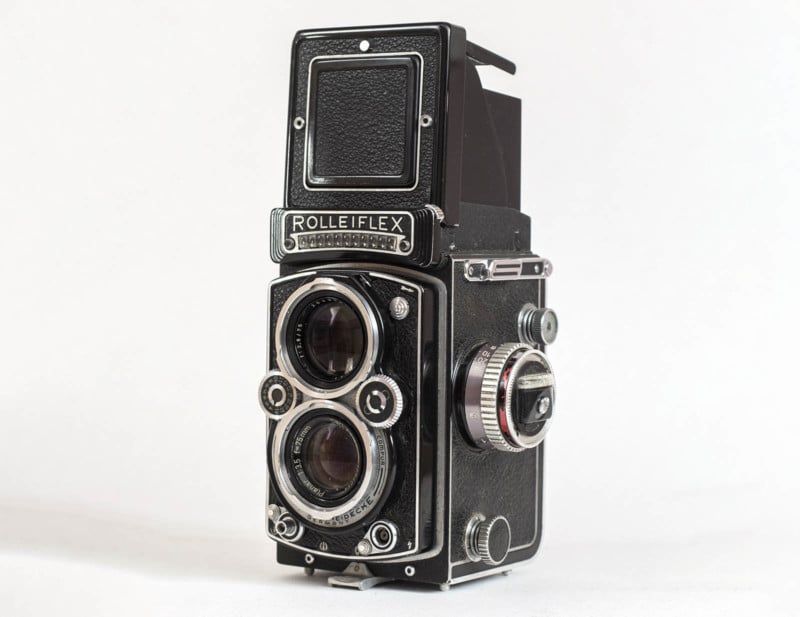
These cameras get their name from the two lenses on the front of the camera. Similar to a 35mm rangefinder, the TLR (“twin-lens reflex”) camera has a lens for viewing and composing the image and one that takes the picture. A big advantage over a 35mm camera is that the viewfinder does not go black when the shutter is tripped.
For street photographers, these cameras are very discrete. You have the advantage of not having to lift the camera to your face to take a photograph. With the top viewing window, all you have to do is look down to compose and focus the image. Many of the TLR cameras feature a popup magnifier that will allow you to get more precise focusing on your subject matter. Also, the shutter is very quiet adding to that discreteness.
One of the limitations of this camera type is they don’t offer the ability to change lenses and some may consider the waist-level focusing a problem. Also, shooting above your subject and looking down can’t be done because of the viewfinder.
Point-and-Shoot Cameras
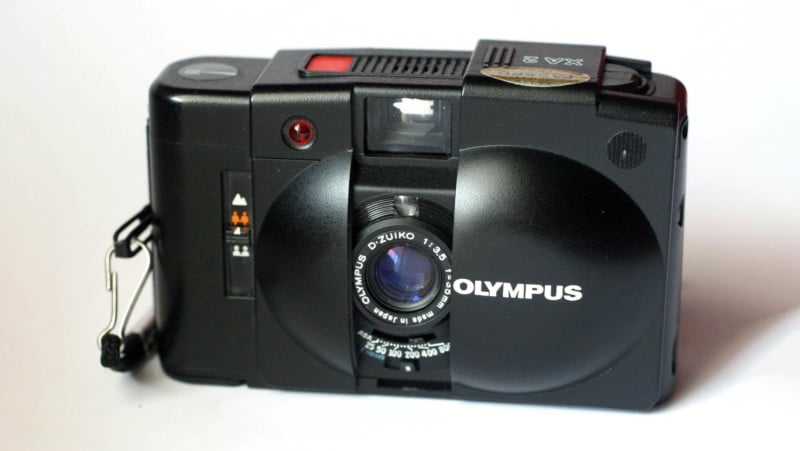
Another 35mm film camera type is simply known as a point-and-shoot camera, also referred to as a compact camera. When it comes to their operation, their title explains it all. These are probably the cameras your parents and grandparents used when taking family snaps at all those major events in your growing up. Most likely the easiest camera to use and a great starter for the beginner in photography or using film. These cameras give little to no control over the exposure and shutter speed of the image.
They are lightweight and most have very limited controls for exposure and flash on the camera. You can adjust the film speed, turn on or off the flash, zoom in and out and press the shutter button are about the most you can do.
Large Format Cameras
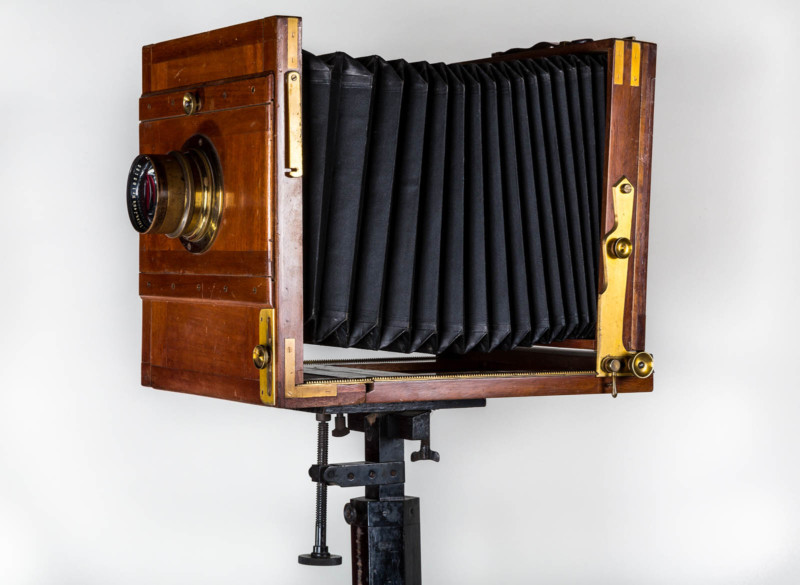
Large format cameras are the predecessor to many modern film cameras. A camera that takes an image that is 9 x 12 cm or larger is considered a large format. It’s always easy to recognize it out in the field because the photographer has a large, black cloth draped over his head so he can compose and focus the image.
This was the camera of choice for many of the great photographers like Ansel Adams, Yousuf Karsh, Edward Weston, and Irving Penn. The large format allowed them to create extremely large prints and it provided a greater depth of field than other cameras.
Large formats come in various sizes from 4×5 as well to 8×10 and 11×14. These large negatives result in some beautiful and almost grainless images. Using this format of photography will slow down your picture-taking process a lot. The cameras are cumbersome and require a careful touch. Once you focus and determine your aperture you’ll probably do it again, just to make sure. Then you load a film holder into the camera, remove the dark slide and you’re ready to shoot!
Instant Cameras
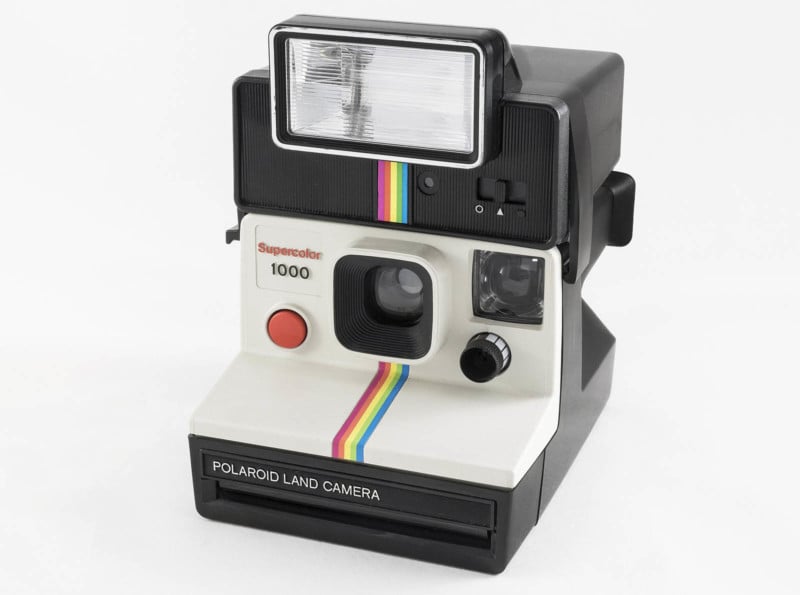
Instant photography became all the rage starting in 1948 at a department store in Boston when the first Polaroid camera went on sale, the Model 95. The greatest advantage is the image will appear before your very eyes in a matter of minutes.
Like the point-and-shoot camera, this camera type offers very little when it comes to controls. Some models have different shooting modes or the ability to adjust the brightness of the image.
For the film, look no further than Polaroid itself. What once started as the Impossible Project to manufacture instant film has now been rebranded under the familiar name of Polaroid. They even have a large format, 8×10 instant film! For those looking for brand-new instant film options, try the Fuji Instax series of cameras and film. They come in color and black and white along with regular and wide formats. The cameras are simple to operate and very affordable to begin your adventure in instant film photography.
Disposable Cameras
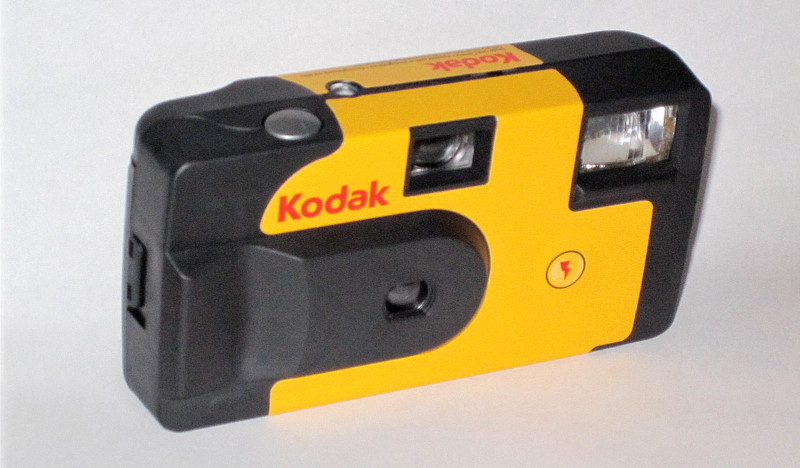
The disposable camera or single-use cameras are still available today. The major film manufacturers all produce them. They come with a flash that has a range of about 3 meters. There are some fun variations on the disposable camera that result in unique images. Some are loaded with popular brands of black and white film. The more interesting types of disposable cameras are underwater and Lomography; while others boast of having a film that produces a retro nostalgic look like sepia.
The disposable camera has little to no control over the final look of your image. Other than turning the flash on or off, the only other button you have to concern yourself with is the shutter button.
These are great starter cameras for those completely without any experience shooting film and great for children who are interested in learning film photography.
Toy Cameras
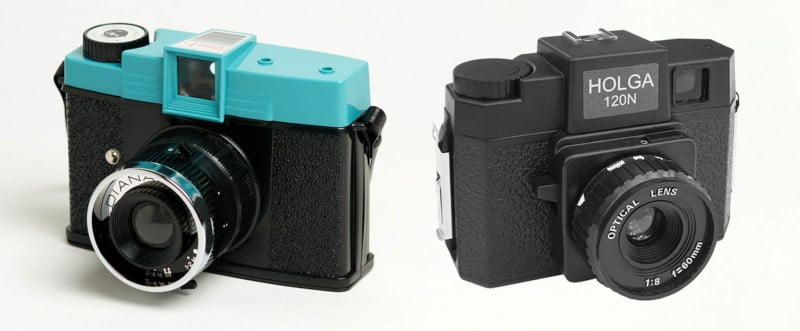
The toy camera has become a favorite of many art photographers because of the imperfect images it takes. These are the most simple cameras, next to a pinhole camera, on the market. What makes their images unique are the no-nonsense plastic lenses and their limitations. The two most popular toy cameras designed for use by children are the Holga and the Diana. You can exploit the weaknesses in these cameras, like light leaks, vignetting, and other distortions to create some beautiful art photographs. The best part of using these cameras is the surprise at how your images turn out.
Stereo Cameras
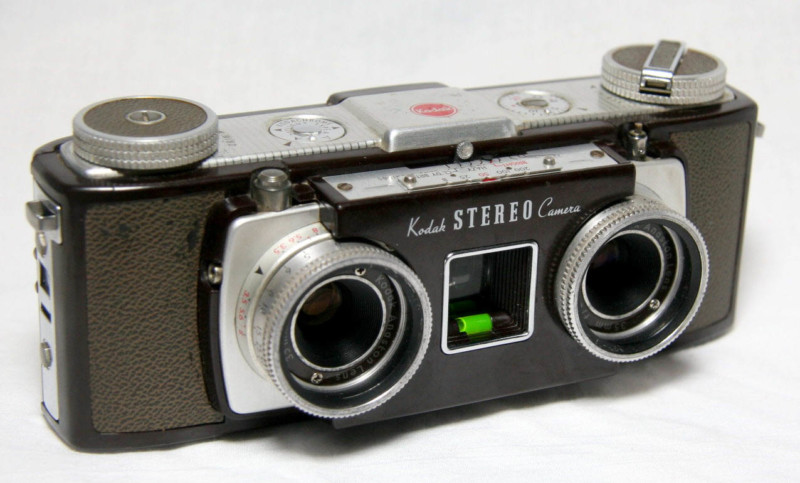
The stereo camera has two or more lenses that produce a 3D image. The first stereo cameras date back to the late 19th century and they became popular in the nineteen fifties. To view the images you’ll have to choose which method is best for you and the photograph. Some of the viewing methods include: crossed-eye viewing, viewing through holes in a card, prismatic spectacles, or special glasses like the ones you get at the movie theatre.
One of the most common methods of viewing, when stereo images were popular, is the stereopticon. This consisted of a handheld device that held a stereoptic print. The viewer held it up to their eyes to view the 3D image.
Panoramic Camera
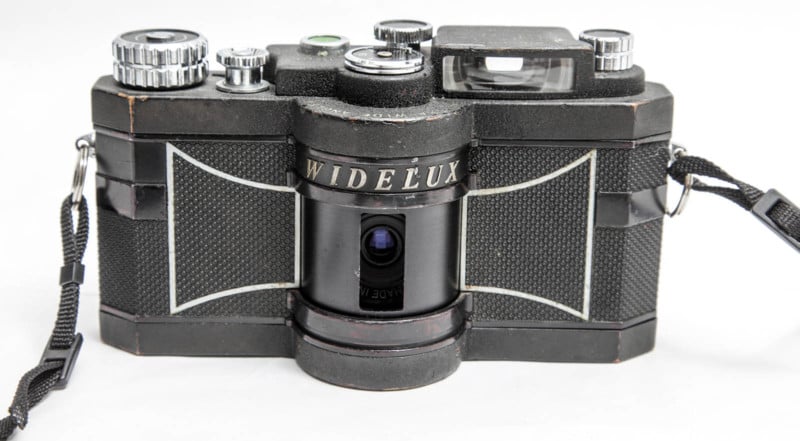
The panoramic camera dates back to the 19th century and the inventors of the camera wanted to produce large, detailed images that could see it all. Instead of just using the confines of just one frame of 35mm film, the camera would use a wider section of the roll to capture the scene.
Some of these cameras have a rotating lens that will mechanically scan the scene before it and expose it on two frames of 35mm film. For the camera to be considered panoramic it should have a field of view approximating or greater than the human eye which is 160º by 75º.
Folding Cameras
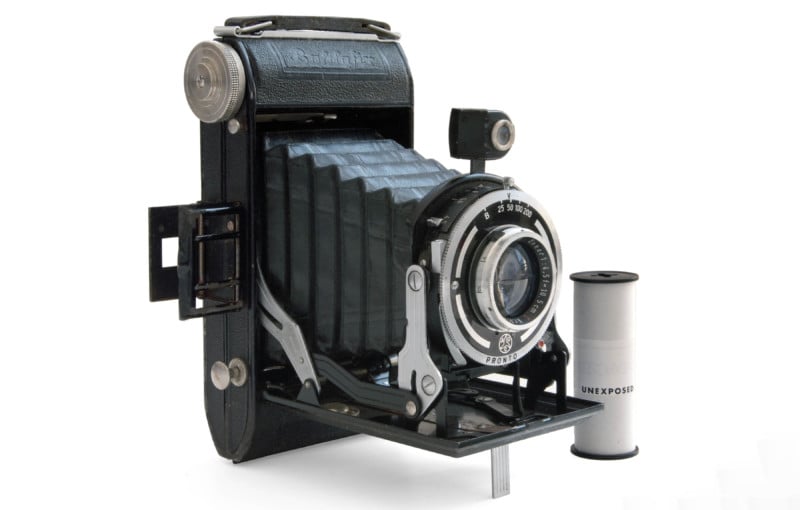
This type of camera was invented in the mid-19th century and was adopted by many different manufacturers. The camera gets its name from being able to fold in on itself creating a compact, portable camera. The camera had bellows between the lens and film plane and you could adjust the length of the bellows making them the way to focus the camera. Some models even allowed some adjustment to the lens plane allowing you to correct for distortion or create unique effects.
The early versions of these cameras took sheet film of approximately 4×6, but soon photography enthusiasts of the day preferred a more compact model taking 35mm or 120 film, making them more portable.
Box Cameras
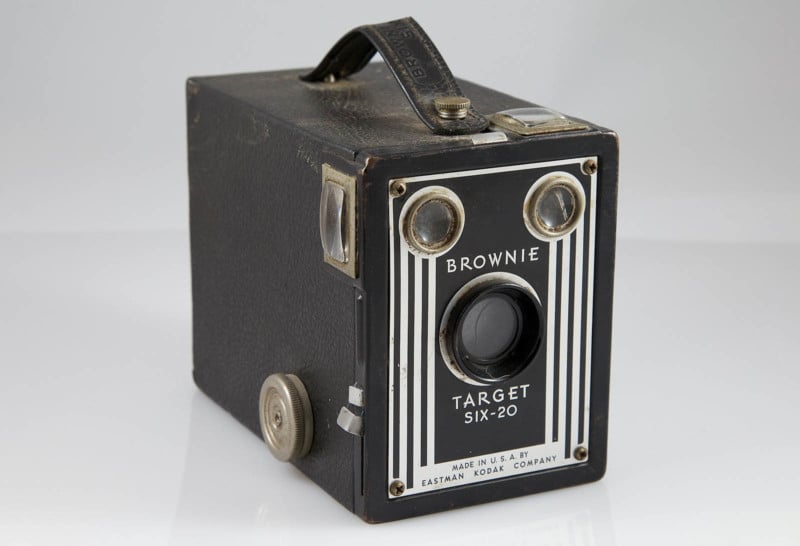
The box camera is just that – a simple box that was made of cardboard, wood, or plastic which had a lens and viewfinder installed. One of the most popular types of box cameras, one that’s still in use today, is the Kodak Brownie. This camera was made with a type of plastic called Bakelite. These cameras take 620 films, but with a quick tutorial you can find online and a 620 spool, you can easily wind your 120 films onto the 620 spools and you’re ready to go!
These cameras offered no control whatsoever. You could not adjust the shutter speed, aperture or focus. They were best used in bright scenes and if you wanted to shoot indoors then you had to purchase an attachable flash. The simplicity of these cameras made them very popular and that’s why there are so many still around today.
Pinhole Cameras
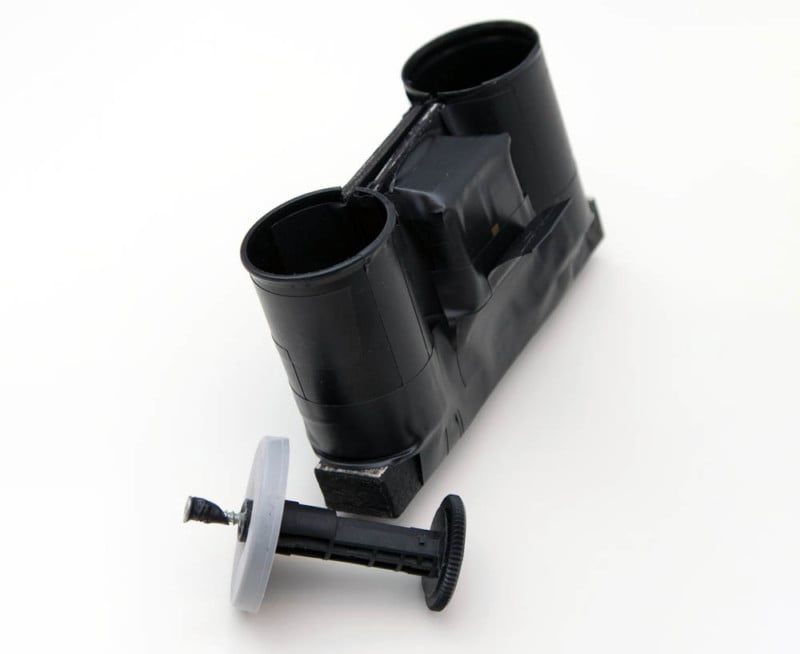
The simplest and easiest camera to use, and you can make one yourself, is the pinhole camera. Essentially it’s a camera obscura, with a pinhole at one end and a place to load film or direct positive paper opposite the hole. They have a wide focal length and tremendous depth of field.
These are great tools to teach the basic principles of film photography. Children can even create pinhole cameras from something as simple as a pop can. Many photographers use pinhole cameras to create unique art photographs.
Press Camera
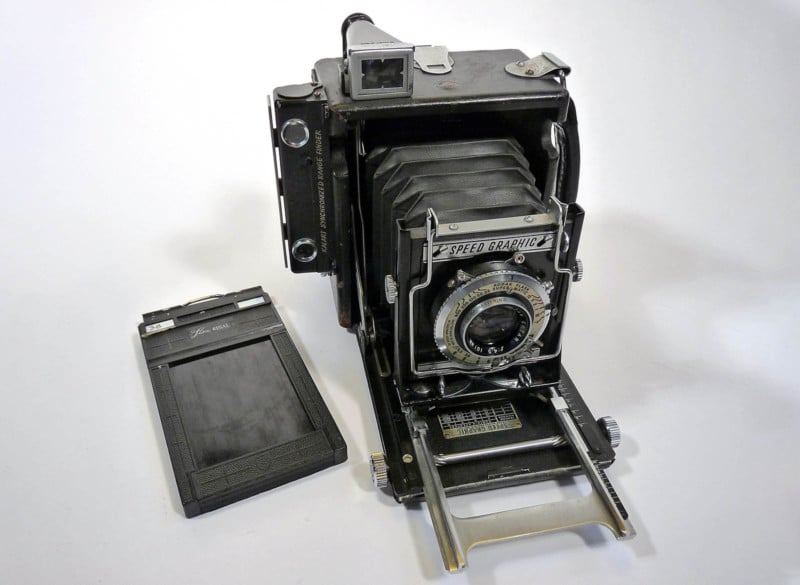
The press camera is in the large format camera category and many are still used today by photographers who want a lightweight, more compact large format camera for the field.
The most popular of these are the Graflex Speed Graphic and the Crown Graphic. The press camera was widely used in the first half of the 20th century and they have some common features like collapsing into a compact box, bellows attached to a flatbed track, the ability to accept sheet film and roll film via interchangeable backs and they don’t have the number of lens movements like other large format cameras.
To imitate the setup of the press camera as it was used in the early days, you’ll need to purchase the mountable flash that took flash bulbs. Unfortunately, due to the popularity of Star Wars, they are difficult to find because the majority of them were purchased to create iconic lightsabers.
Image credits: Header photo from Depositphotos